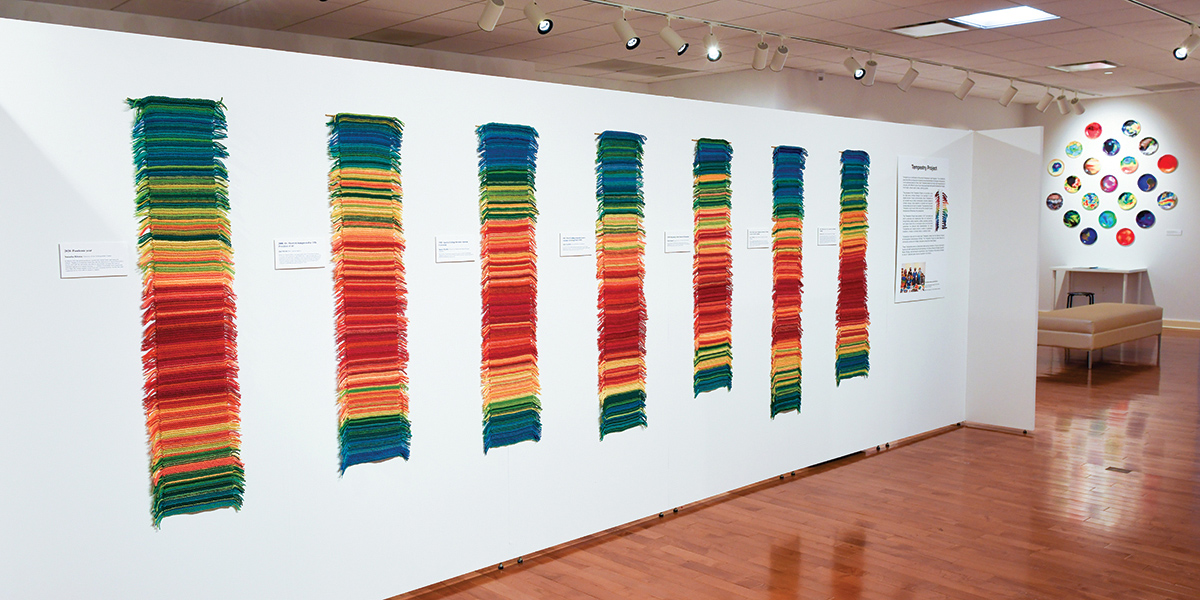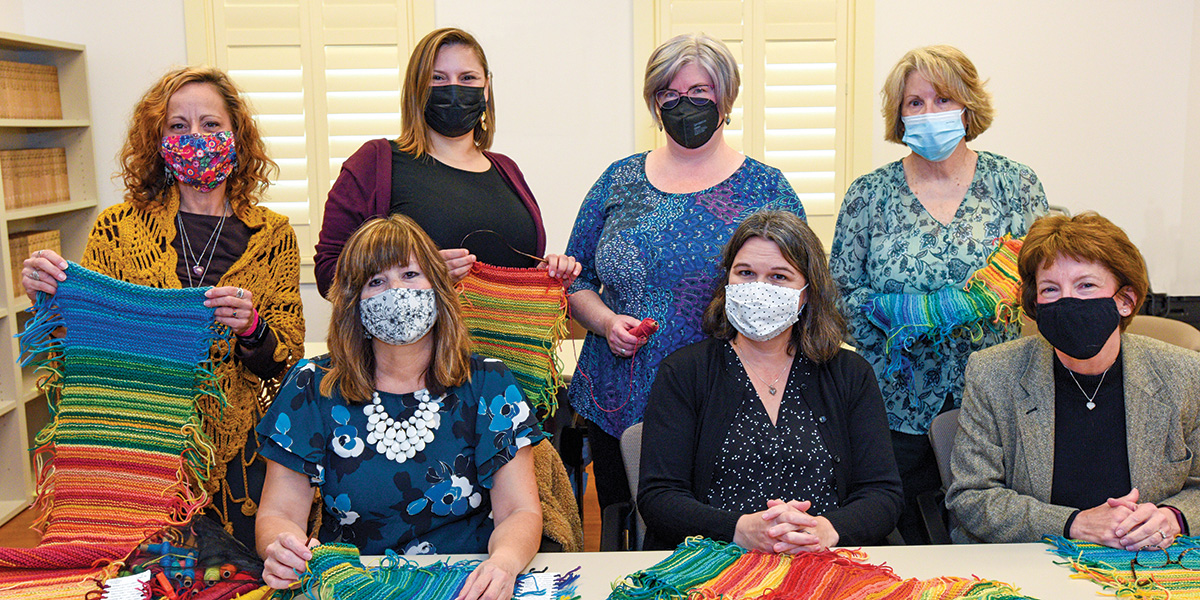Last Look: Stitches in Time

At lunchtime every week during the fall semester, seven women gathered at the Schingoethe Center of Aurora University to knit.
This was more than a knitting circle. The AU professors and staff members came together as part of the Tempestry Project, a worldwide effort to spark a conversation about climate change by capturing local daily temperature changes in the colored threads of a tapestry.
Natasha Ritsma, director of the Schingoethe Center and instructor of museum studies, assigned each knitter one of seven key years in AU history, ranging from AU’s founding as Mendota College in 1893 to the outbreak of the COVID-19 pandemic in 2020.
“Climate change is a complex global issue,” said Ritsma. “One way to get the conversation started is to look at changing temperatures, not through graphs and charts but through a community knitting project. ‘Tempestries’ are an accessible way for people to visualize climate data. They also foster community building by connecting friends, artists, teachers, crafters, scientists, activists, and nature lovers around a conversation about environmental awareness.”
Each tapestry the AU women knitted captured one year of climate data with 365 rows of stitches — one row for each day of the year. The color of yarn in each row represented that day’s highest temperature, based on publicly available climate data from the National Oceanic and Atmospheric Administration. The colors spanned dark blue for the coldest days to bright red for the hottest.
The finished “Tempestries” were displayed side by side at the Schingoethe Center this past winter and spring as part of the “eARTh tones” exhibit featuring artists’ responses to pressing environmental concerns.
“My mother taught me to knit when I was very young, but I didn’t keep up with it until recently,” said Marie Bennett, adjunct instructor of flute and flute ensemble. “I have loved getting back into knitting. And the Tempestry Project was a great way to branch out, and to meet other knitters on campus.”
Melody Ulin, visit coordinator and enrollment assistant, added, “I took part in this project because it forced me to do something really out of my comfort zone. My late father was a fiber artist, and this was a way for me to pay homage to him. I also had the opportunity to strengthen some friendships and start some new ones.”
The Tempestry Project was started in Washington state in 2017 by three friends as a way to inspire communities to document their local temperatures. The art collaborative sells kits, including the yarn, to groups and organizations around the world.
“It has been a long time since I completed a knitting project,” said Kim Williams, adjunct instructor of biology and health science. “The opportunity to visually represent Aurora’s climate change data to the community at large was inspiring. I believe this is a great way to communicate science.”

Second row, left to right: Denise Hatcher, Natasha Ritsma, Marie Bennett, Kim Williams
Knitting Important Dates in AU History
1893
AU founded as Mendota College
1912
College moves to Aurora, Illinois
1930
Aurora College begins training elementary and secondary school teachers
1947
Evening degree program serves veterans returning from WWII
1985
Aurora College becomes Aurora University
2000
Rebecca L. Sherrick inaugurated as first woman president of AU
2020
COVID-19 pandemic reaches the U.S.